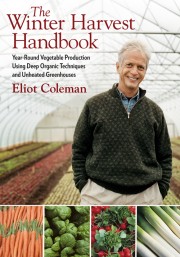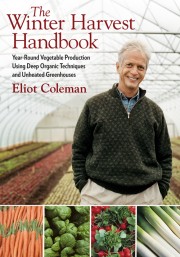 The June National Geographic features a story The End of Plenty which starts off saying that even though humans produced a record amount of grain last year, we still had to dip into stockpiles from past years to feed ourselves. Sobering stuff. But then for solutions it goes deep on the same tired green revolution song and dance, and notes GMOs and the Malawi Miracle (hybrid seeds and a bag of fertilizer for every farmer) as points of hope. But at least it notes all the ways Borlaug’s theory has failed and gives time later in the piece to Vandana Shiva and an alternative project in Malawi that’s producing great yields while improving soil with classic organic methods.
The June National Geographic features a story The End of Plenty which starts off saying that even though humans produced a record amount of grain last year, we still had to dip into stockpiles from past years to feed ourselves. Sobering stuff. But then for solutions it goes deep on the same tired green revolution song and dance, and notes GMOs and the Malawi Miracle (hybrid seeds and a bag of fertilizer for every farmer) as points of hope. But at least it notes all the ways Borlaug’s theory has failed and gives time later in the piece to Vandana Shiva and an alternative project in Malawi that’s producing great yields while improving soil with classic organic methods.
Echoing this latter wisdom is the new book from Eliot Coleman, The Winter Harvest Handbook. One of the original American organic farmers lays out his system for producing vegetables year-round, even in northern climes, using super-sustainable ‘deep organic’ methods.
Key to his system are movable unheated greenhouses, plastic covered frames 22 by 48 feet on tracks that are parked over crops as needed. For example in the fall he’ll leave the house over tomato plants to extend their season into November or later, and then slide it down to the next area on the track that has leeks and greens already growing, allowing them to thrive through the winter.
But even a greenhouse can’t save vegetables from the winter freeze if it’s unheated, so what he does is deploy floating row cover, a standard season extender used by organic growers but usually only outdoors, to cover the indoor crops. This simple yet ingenious double coverage combo keeps crops just warm enough to survive even deep freezes in Maine where Coleman lives, and boosts daytime temps enough to encourage growth, allowing him to sell salad greens, leeks, and more all winter long, until it’s time for spring greens and summer crops once again. And the greenhouse moves once more…
Talk about elegant simplicity. Though he’s not the first to do this, Coleman has improved on the practice and has thereby added an important technique to the food security/sustainability toolbox with this generous 238 page blueprint. Why aren’t we doing this everywhere already? Granted, it’s resource-intense up front, plastic and row cover don’t grow on trees, and one needs to be able to afford the investment and a payback period of several years, but it’s easy to imagine such scenarios reducing food miles and carbon footprints from Brussels to Bellingham. Not that this will help us manage our problem with grain stocks, but it’s a start and folks like the Land Institute and their perennial grain crops could be part of that solution.
After blowing the doors off of the notion that we can’t eat local all year, Coleman’s book goes into his theory of ‘deep organic’ which he uses to define the truly sustainable organic route of food production. He calls out the co-opting of organic by industrial food interests for what it is, a sham system based in profit and not values. What other than an industrial mindset would allow an organic megafarm to use ‘less toxic’ chemicals in order to protect their investment?
Alternatively, deep organic farmers like Coleman reject chemicals outright and seek better ways of farming by mimicking natural patterns and taking advantage of simple facts like the amazingly adequate amount of sun all of the continental US receives in winter, leveraged with a simple technique. Not that small farms like Coleman’s can replace enormous California row crop operations any time soon, but it’s certainly possible, and it’s definitely sustainable profit-wise. His mere 1.5 acres grossed $120,000 the last 2 years: not at all bad for a greenhouse operation. His miniscule gas bill is probably part of the reason.




